A restaurant is more than food and service.
Dining out is a whole experience whose outcome largely depends on the restaurant atmosphere and whether patrons feel welcome and comfortable in the restaurant space.
A significant factor in this is your restaurant’s design.
From the layout, colors and lighting to the art hanging on the walls, all of it contributes to the full guest experience.
And it is design that often determines whether a guest will choose your eatery from the competition.
That’s why, today, we will give you some excellent tips on what to pay attention to when designing your restaurant to make it stand out.
We will also provide many great examples of restaurants whose design choices can be your inspiration.
Let’s dive in.
Develop a Cohesive Concept
To make your restaurant design stand out, start by developing a cohesive concept that reflects your eatery's identity—be it based on cuisine, location, historical era, or the types of events celebrated there.
Once you've decided on your restaurant's identity, integrate it into every aspect of your restaurant, including design.
Your distinctive theme should resonate across decor, color scheme, furniture, and even the menu, creating a memorable customer experience.
Extend this cohesion to your online presence. The design of your website and even the content on social media should align with the theme, contributing to a strong brand.
A stellar example is the Pearl Chablis & Oyster Bar in Melbourne, Australia, where the oyster theme pervades every detail, from the name to the decor.
For instance, the choice of the name "Pearl" for the restaurant is tied to oysters, as natural pearls are formed within oysters, creating a meaningful and fitting connection to the restaurant's theme.

Source: Pear Chablis & Oyster Bar
Now, to the design.
The marble counter in the bar mirrors the colors of oysters, and even the plates are designed to reflect the uneven shapes of natural oyster shells.
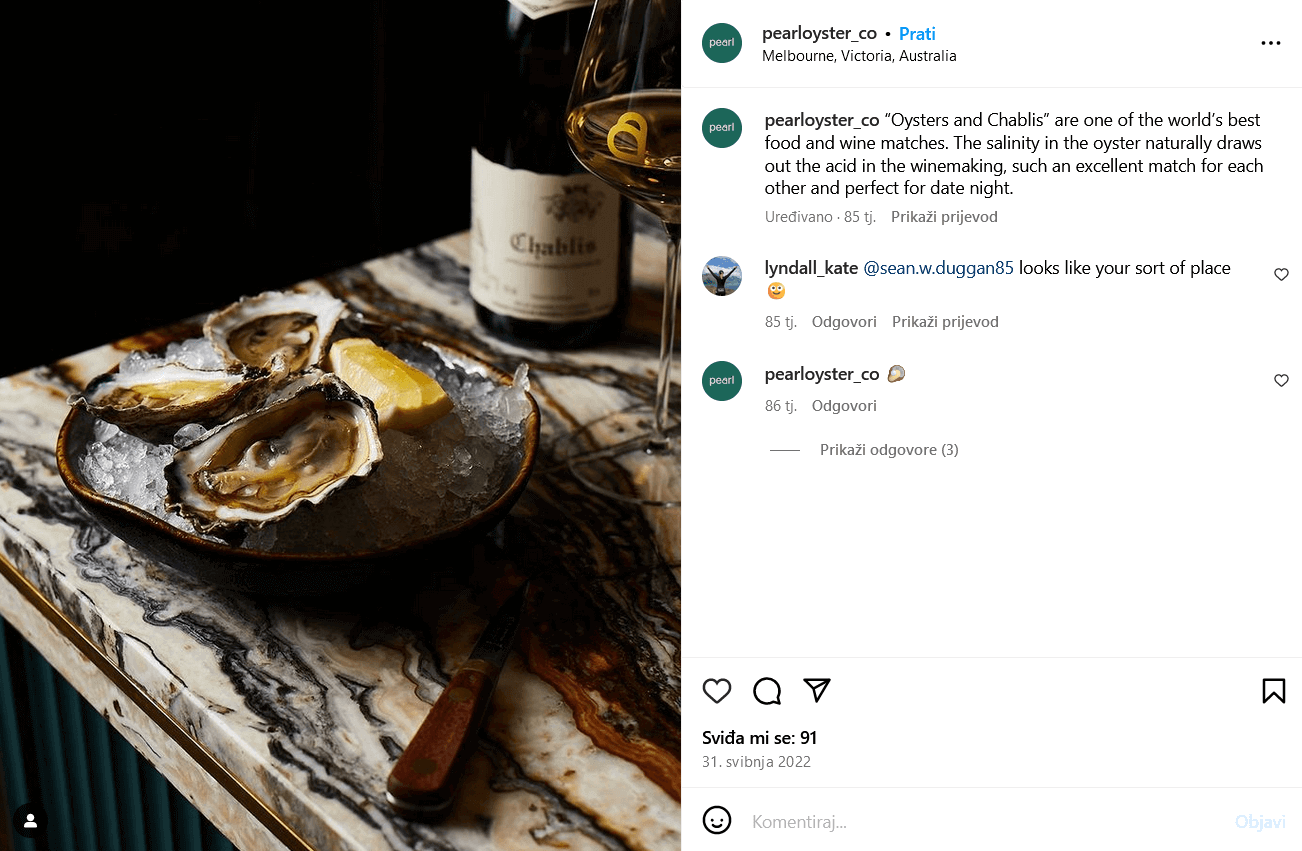
Source: Pearl Chablis & Oyster Bar on Instagram
The menu and wine book carry natural sea colors (blue and green), and the velvet stools are also in ocean tones, all of which enhance the theme consistently throughout the customer's experience.
Sophie, Lead Interior Designer from BrandWorks Studio, the creative force behind this compelling restaurant, emphasizes how important it was to connect the interior design palette with the tasting palette of this oyster bar:
"Pearl was to be a space that fully celebrated the symbiosis between Chablis and Oysters. The interior palette for Pearl, therefore, honors the characteristics of her premium offering that you experience on the tasting palette."
In essence, everything at Pearl is interconnected—from the restaurant's name and colors to the counter material and plates.
This cohesive concept sets the restaurant apart, creating a beautiful design that customers (and critics!) love.
Create a Unique Entryway
A unique entryway requires a dedicated touch of design, considering it serves as the initial impression your patrons get of your restaurant.
Whether inside or outside, the entryway should be designed to warmly invite customers, especially in areas with numerous competing restaurants.
It should feature a convenient spot for hosts, comfortable waiting areas, and eye-catching decor reflecting the restaurant's aesthetic.
Also, as Joel Schultz, former design division lead of Great Lakes Culinary Designs, says, the entryway has to be approachable.
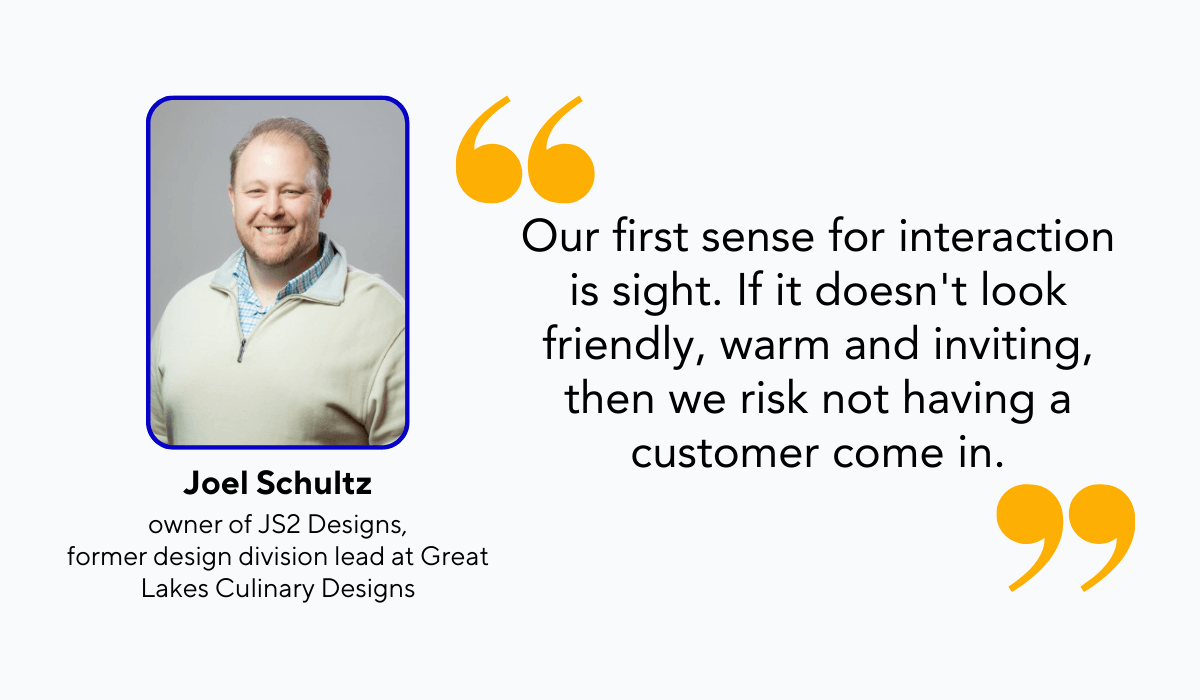
Illustration: Tablein / Quote from rd+d
So, how can you create an inviting entryway that is also warm and friendly?
Here are some tips:
- Infuse elements of your restaurant's identity into the entryway design, conveying the overall theme and ambiance.
- Add clear and appealing signage that is easily visible from a distance. The signage should also reflect your restaurant's personality and be consistent with branding.
- Use warm and inviting lighting to create a welcoming atmosphere.
But if you want to make it more unique, think outside the box.
Take, for instance, the restaurant and pizzeria Ancora in Maribor, Slovenia.
Their entryway is a long passage with nothing less than a red carpet. This is definitively something that gives customers a memorable experience—maybe feeling like they are strolling down the Oscars?
Adding an even more creative touch, they've also painted fish on the street, guiding guests to the entrance in a truly unique way.
Source: Ancora on Instagram
Remember, the goal is to make patrons feel welcomed and intrigued from the moment they approach your restaurant—or even before, as Ancora does.
Thoughtful entryway design will encourage customers to step inside, explore, and ultimately enjoy what your establishment has to offer.
Make the Layout Reflect Your Brand
Your restaurant layout is essential for creating an excellent dining experience for your customers.
That's why, first and foremost, it has to be functional.
You wouldn't want your staff asking guests to move because they can't pass due to cramped spaces, nor do you want unpleasant smells from the bathroom ruining the customer experience because you put a table too close to the toilet.
The well-designed restaurant layout prevents such scenarios that would unquestionably diminish the dining experience.
However, apart from functionality, your restaurant layout should also reflect your brand.
The brand determines the kind of customers you want to attract and should, therefore, guide you in your design decisions.
For instance, if you run a family-style spot targeting families, having tables for two scattered around is not ideal.
Instead, you may want to consider putting tables closer together and providing roomier booths with comfortable seating.
Or, you can take inspiration from The Original Crab Shack from Tybee Island near Savannah, Georgia.
This seafood restaurant knows how to attract its target customers—families—and design is integral to it.
Their restaurant layout consists of bigger tables with ten chairs around, catering to large families. And, of course, there is still enough space for servers to walk freely without asking guests to move.
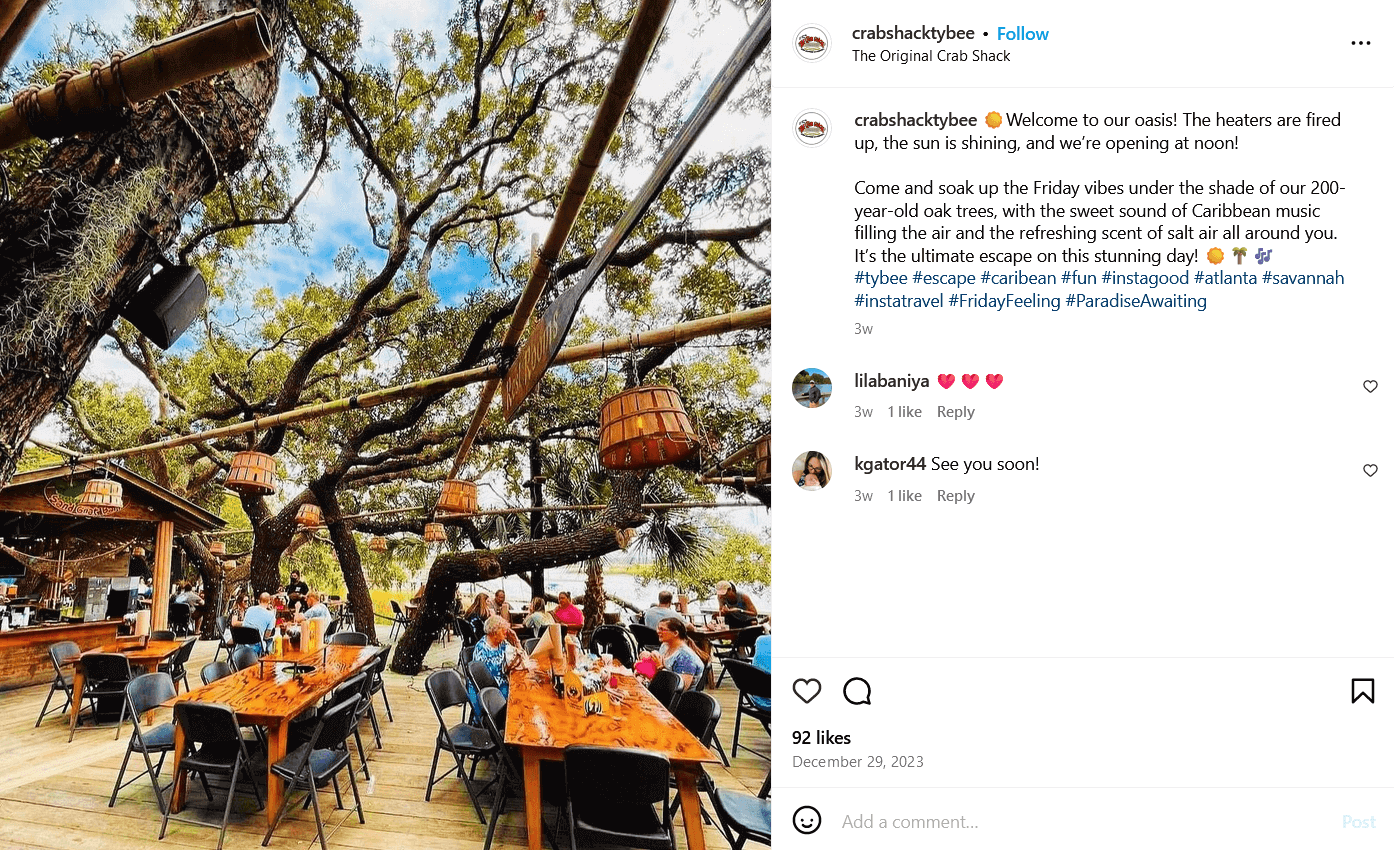
Source: The Original Crab Shack on Instagram
Another way they attract their target customers is by designing a room with arcade games for both kids and adults to provide an even more memorable experience.
This room also serves as a great space where kids can celebrate birthdays, and it has a large table with many chairs in the middle. Perfect for birthday parties!
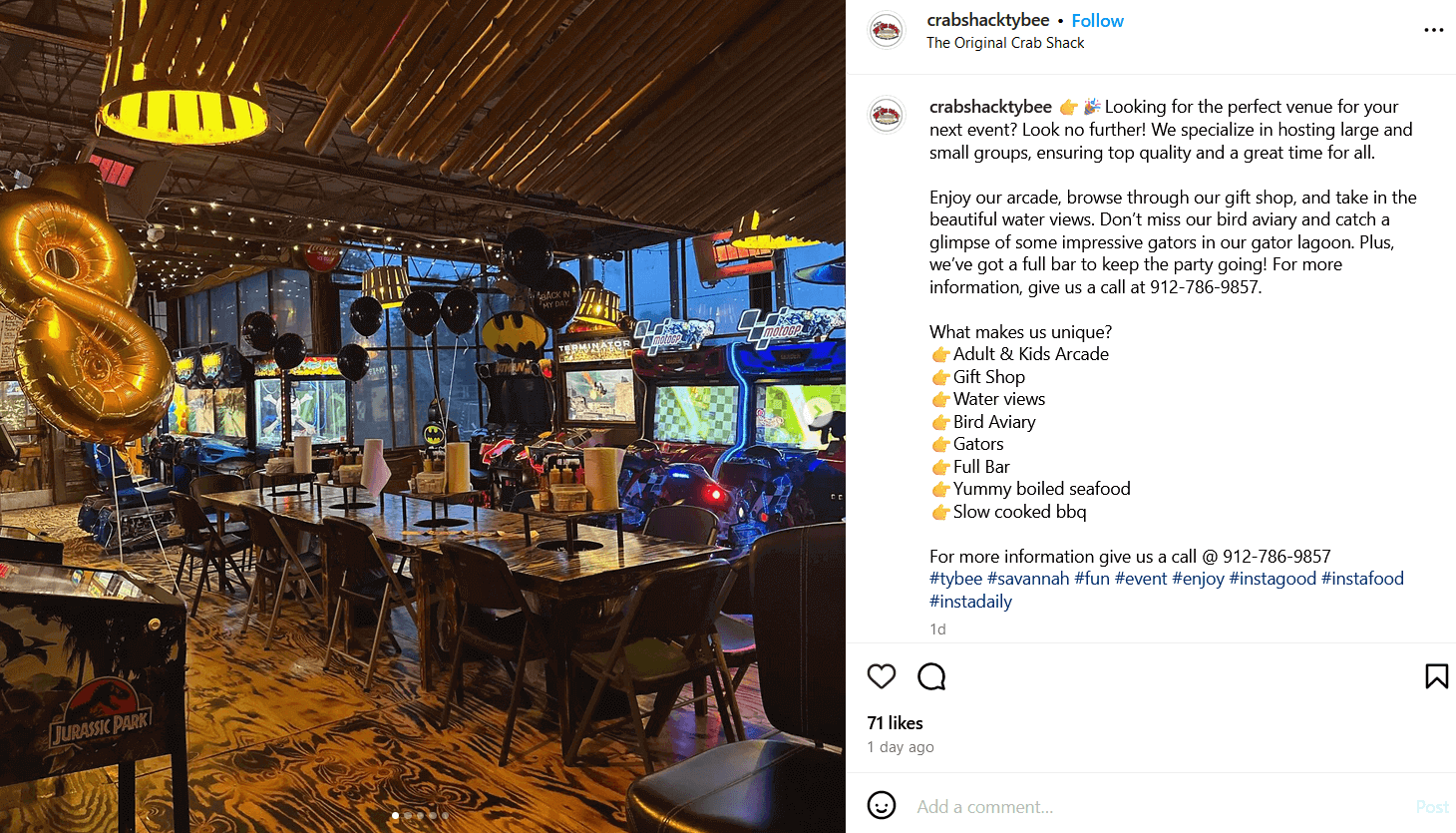
Source: The Original Crab Shack on Instagram
On the other hand, if your brand is all about romance and intimacy, your layout should match.
Think about smaller tables with two chairs and carefully consider lighting to create a dimly lit yet inviting atmosphere, similar to the ambiance at One If By Land, Two If By Sea restaurant in New York.
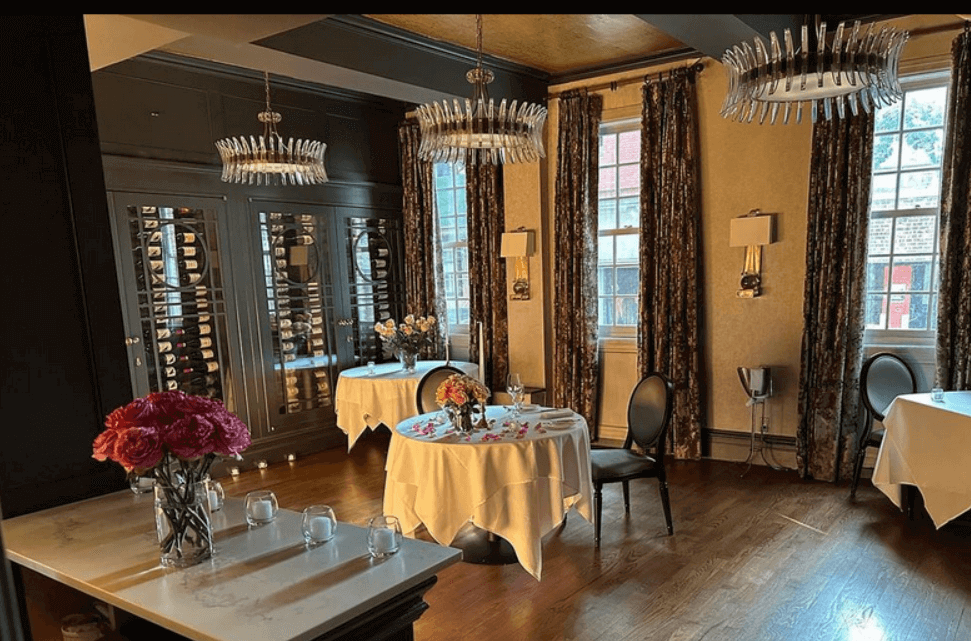
Source: One If By Land, Two If By Sea on Instagram
To conclude, your restaurant layout is more than just arranging tables and chairs.
Designing your layout is a strategic move that will influence not only the functionality of your restaurant but also the overall ambiance and the type of customer base you want to attract.
Integrate Technology in Your Design
Integrating technology into your restaurant's design can elevate the dining experience and set your eatery apart from the competition.
Elements such as interactive menus, digital signage, and immersive experiences can all add a modern and innovative touch, catering to tech-savvy patrons.
For example, you can replace traditional paper menus with interactive digital versions. You can opt for menus through QR codes that guests can scan with their smartphones.
Or you can even offer touchscreen displays or tablet menus.
However, it's essential to approach this considering your customer base.
While some patrons may embrace the convenience and modernity of such menus, others may prefer a more traditional approach.
As highlighted by this Reddit user (and many more below his comment), some don't want to navigate through digital menus endlessly.

Source: Reddit
To address this, offer a balanced approach.
Provide the option for both digital and traditional menus, ensuring that those who prefer the old-fashioned way can still enjoy a seamless experience.
After all, maybe older patrons aren't so comfortable using phones for this purpose, too.
But what you can do is, for example, use digital signage to display promotions, featured dishes, or special events.
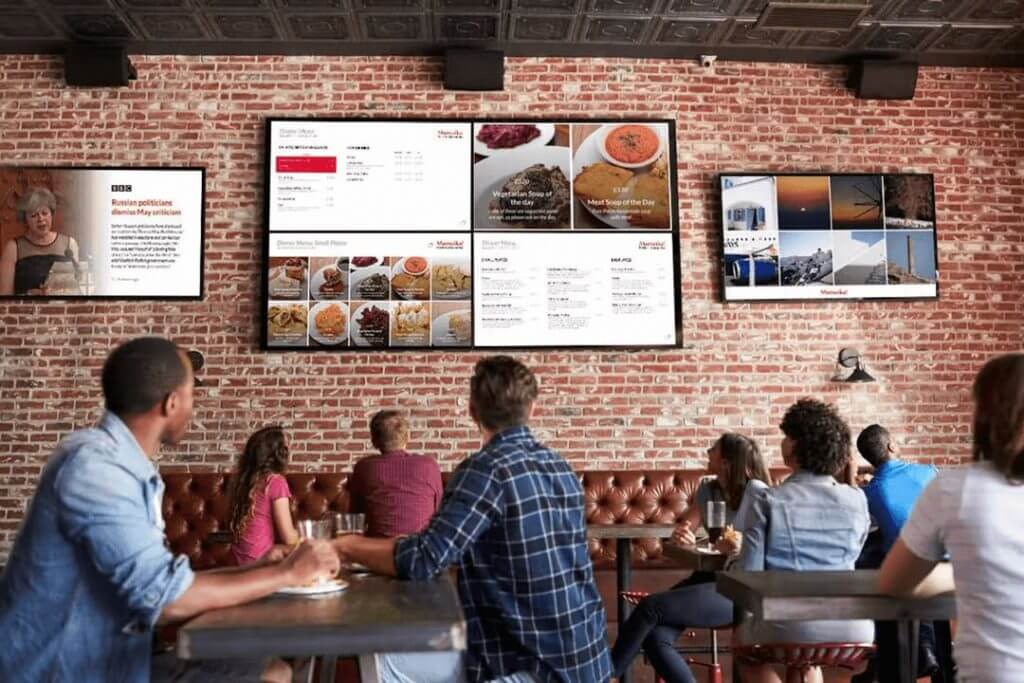
Source: AI Screen
Or use this technology in a more unique and personalized way.
For example, through these displays, you can periodically introduce your employees and their stories and also add which dishes they recommend guests try.
This would give a dynamic element to your restaurant's ambiance and definitively catch the eye of patrons. Maybe even encourage them to try a dish they never thought of trying.
Through such displays, you can also showcase the process of preparing your specialty dish, providing a unique and engaging experience for customers.
The key to implementing technology in your design is to tailor it to the preferences of your target customers.
Another example would be if your customers usually book tables online. In that case, the platform you’re using should be customizable enough to align with your brand aesthetic.
Luckily, Tablein allows you to do just that.
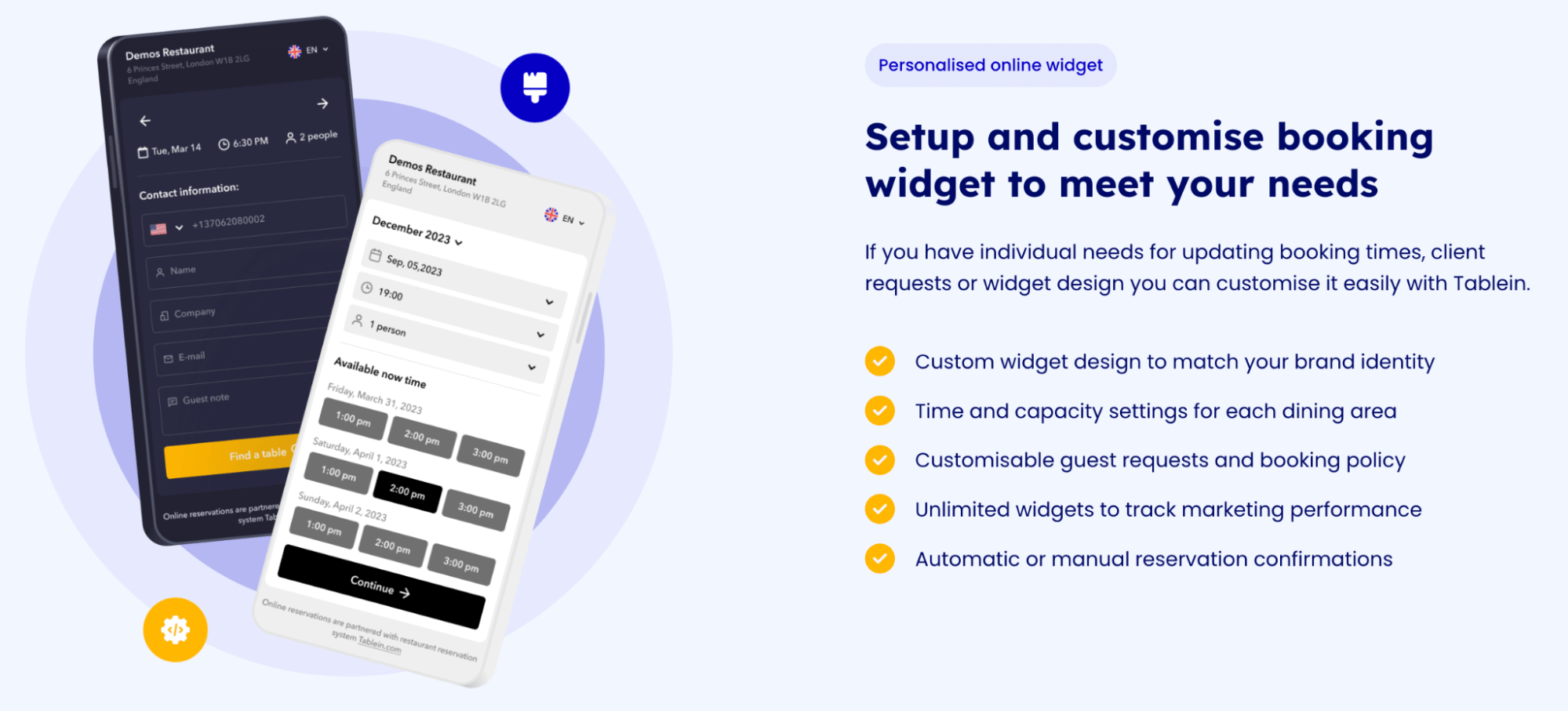
Source: Tablein
When you use Tablein for table bookings, you can design the widget to match your brand identity.
Additionally, make sure that the technology you plan to integrate aligns with your restaurant's overall aesthetic.
Sleek and modern technology complements contemporary designs, while more traditional or rustic establishments may benefit from subtler tech integration.
Invest in Custom Artwork
Investing in custom artwork, particularly pieces from local artists, is another smart move in designing your restaurant.
Art will enhance the visual experience for customers while also contributing to the unique and memorable restaurant setting.
Good art will also set your restaurant apart from the competition.
Black Tap Craft Burgers & Beer, which first opened in New York and now has more than twenty restaurants worldwide, uses this approach to design each restaurant location.
They pride themselves on working with local artists to capture the city's energy in the captivating murals they create.
The murals, designed to be permanent, are intended to add impact to the space, drawing inspiration from the collaboration of Warhol and Basquiat.
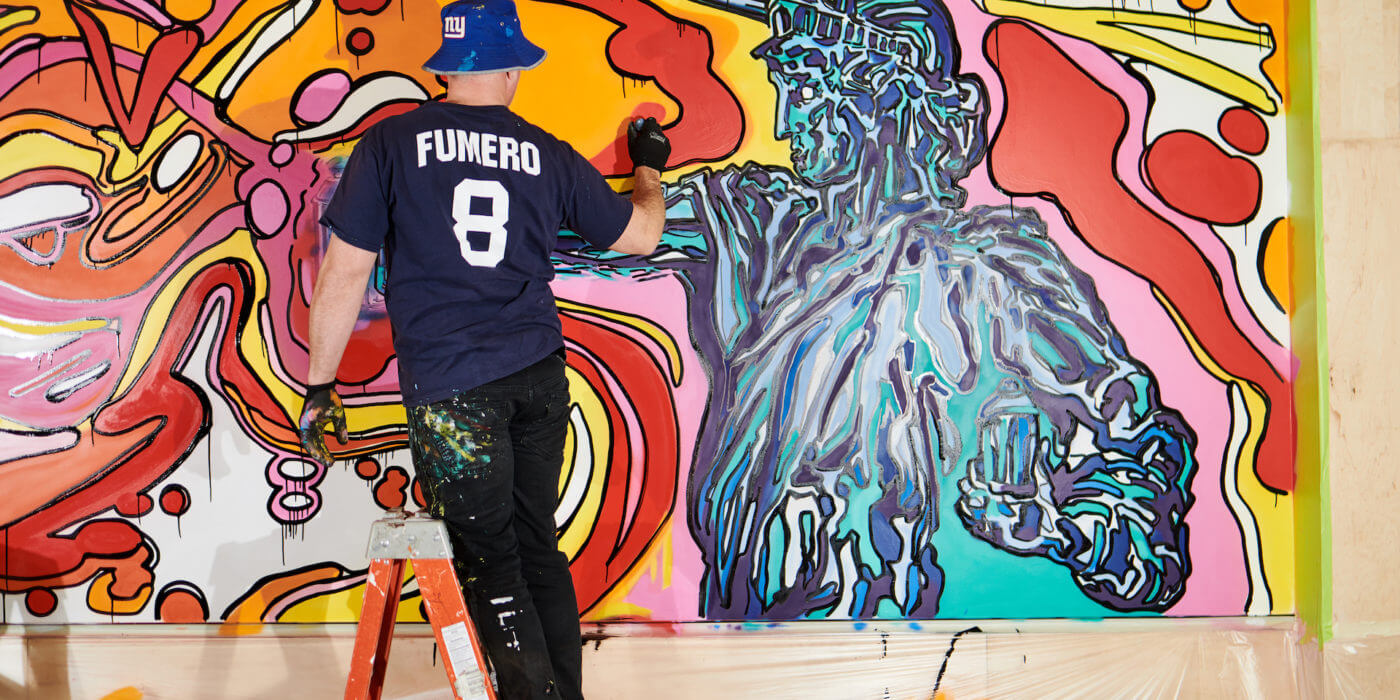
Source: Black Tap
Such a blend of art gives Black Tap restaurants a touch of artistic creativity and vibrancy that wouldn't be possible without investing in art.
Another way you can use artwork to attract guests and make yourself memorable in customers' eyes is to change the artwork on display periodically.
This doesn't necessarily mean a continuous financial investment in new pieces.
Instead, you can collaborate with local artists and transform your restaurant into a dynamic art space.
In other words, you can turn your restaurant into a gallery. This would bring you several benefits:
- It would show you support the local art community.
- It would give a sense of freshness and variety to the restaurant's visual appeal.
- New artists might even bring you new guests, especially if you organize opening nights.
Many restaurants around the world do this.
For example, Malaka Spice, a fine dining restaurant in Pune, Maharashtra, successfully implements this strategy by featuring rotating displays of artwork from local artists.
Source: @Malakaspice
This adds an artistic touch to the space and creates a dynamic and ever-changing environment for diners. And, according to reviews, they love it.
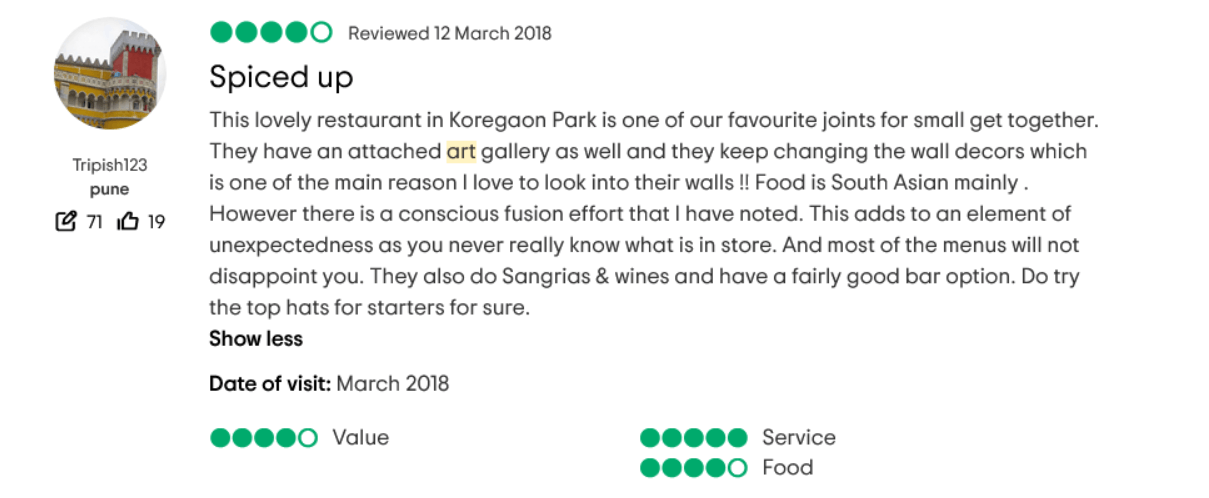
Source: Tripadvisor
All in all, by investing in custom artwork and fostering collaborations with local artists, your restaurant can both elevate its aesthetic appeal and create a more memorable and holistic experience for guests.
Consider an Open Kitchen Design
And the last tip today on how to make your restaurant stand out with design is to integrate an open kitchen design.
Open kitchen design in restaurants would be a smart move for several reasons.
First and foremost, when you enable guests to witness chefs at work, you add an element of transparency and improve the overall dining experience for guests by providing authenticity and a connection to the culinary process.
Also, this "entertainment" factor of chefs showcasing their skills in an open kitchen can be sort of a spectacle for diners.
It can create a dynamic and immersive atmosphere, making the dining experience more memorable.
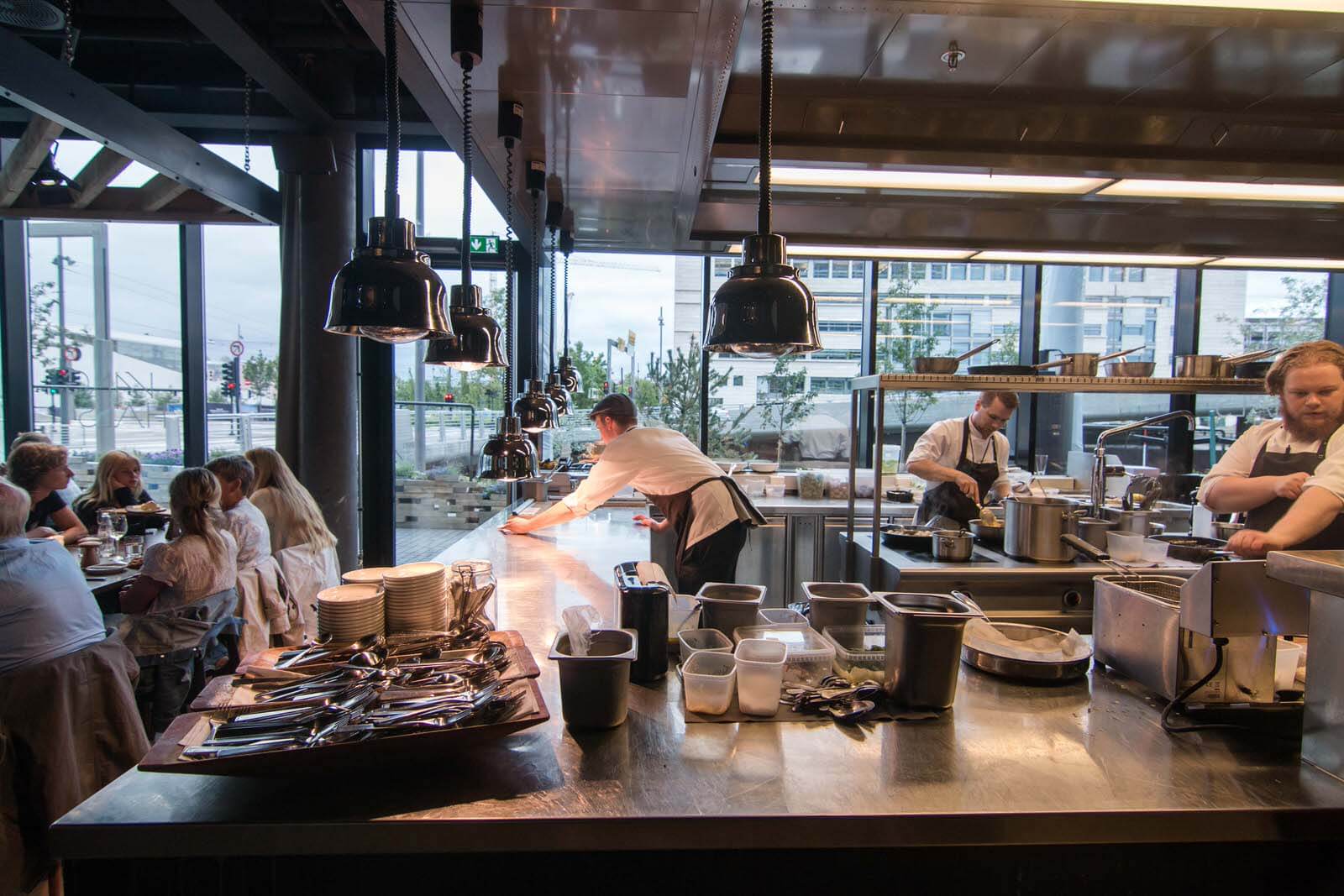
Source: Fohlio
Beyond the entertainment value, the open kitchen design offers practical benefits.
It allows customers to observe kitchen staff at work, providing reassurance regarding food preparation and hygiene practices.
This can build customer trust in your restaurant and give confidence in the quality and safety of food.
Additionally, when you have an open kitchen in your restaurant, food scents permeate the space, creating a sensory experience for diners.
And this matters a great deal!
According to a study, the right scents can significantly impact food sales, with potential increases of up to 300%, as was the case at a petrol station with a mini-mart, where the aroma of coffee led to a significant increase in coffee sales.
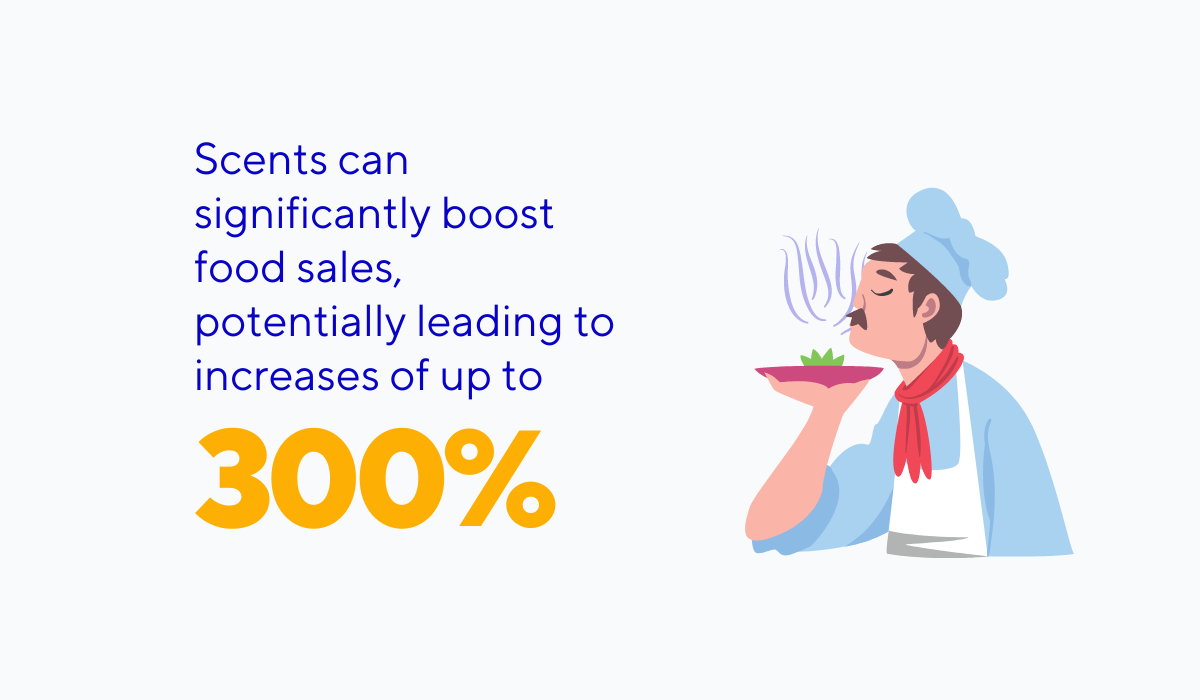
Illustration: Tablein / Data: Independent
The University of Paderborn also found that scents led to a 14.8% rise in buying intention and a 15.9% extension of a customer's stay.
So, if a savory smell fills the space, it can positively impact customer behavior and even encourage them to order more food.
To sum up, an open kitchen design can set your restaurant apart from competitors by offering a unique and engaging element.
It brings transparency and authenticity to your restaurant and offers a sensory experience that can influence customer satisfaction, increase sales, and contribute to a memorable dining experience.
Conclusion
As you can see, many of your design choices will depend on your restaurant's identity and theme.
And that's the point. Your restaurant design should reflect your identity and invite your ideal guests.
To bring this vision to life, craft a seamless design concept that threads through every element, from the entryway and layout to furniture, tables, plates, cutlery, lighting, colors, and artwork.
By combining these elements, you will create a space that stands out, enticing patrons to choose your restaurant and ensuring they keep coming back.
Get a 30-day Exclusive Trial
As a Tablein blog reader, you’re eligible for an exclusive 30-day free trial to experience our simple reservation solution for your restaurant.
Enter your business email, and we’ll send you all the steps needed to create your account.
Share this
You may also like
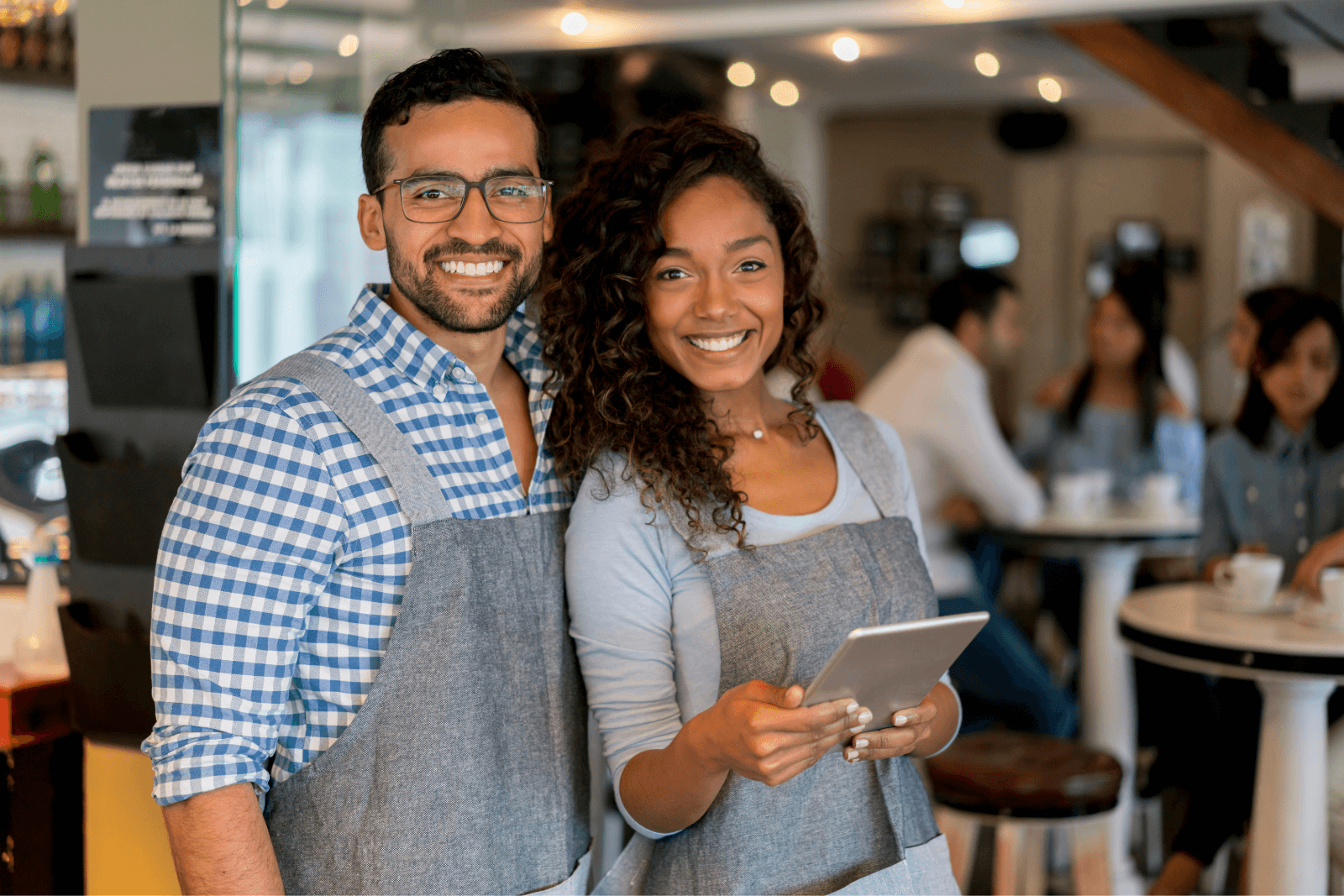
11 Marketing Ideas for Driving Restaurant Sales

5 Tips to Prevent No-Shows at Your Restaurant
